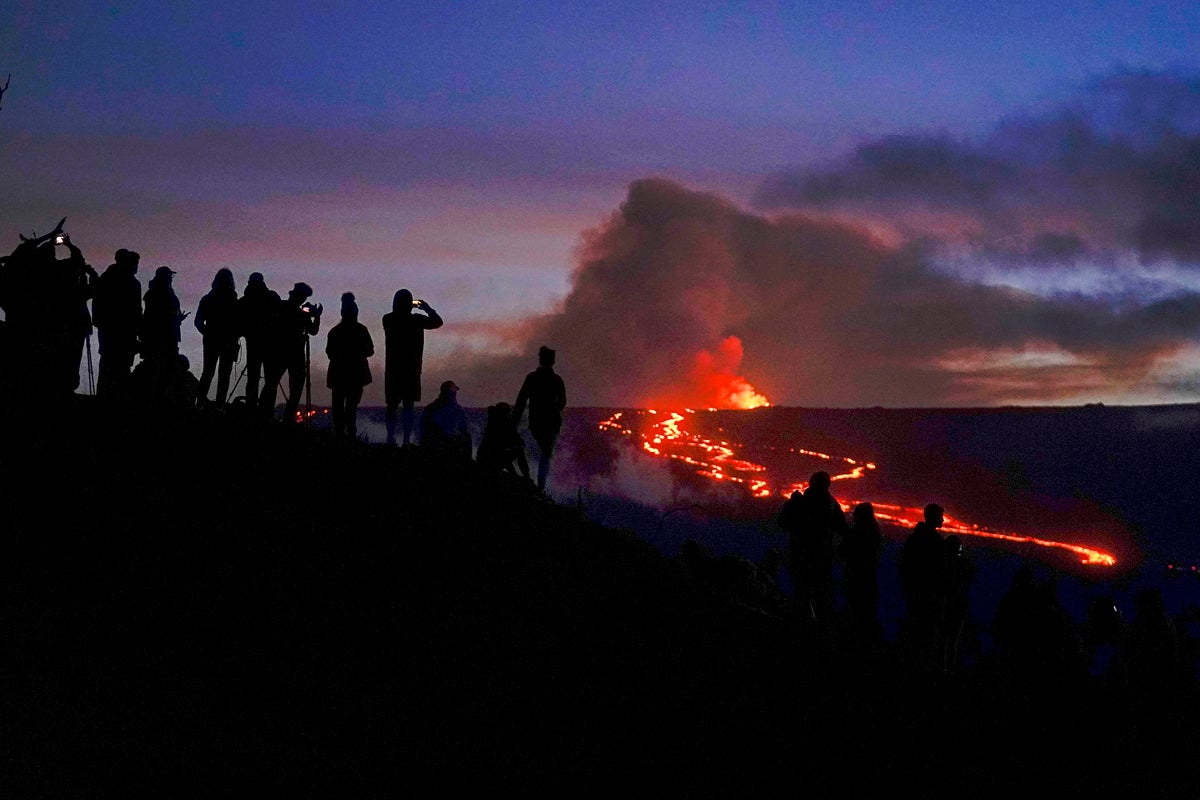
Lava from Hawaii's Mauna Loa volcano is no longer feeding a flow that's been creeping closer to a crucial highway, scientists said Thursday, even as the world’s largest volcano keeps on erupting.
That means lava isn’t advancing, and is no longer an imminent threat to the road that connects the east and west sides of the Big Island. Hawaii County officials say they will continue to plan and remain vigilant.
As of Thursday morning, the lava that was contributing to the flow heading toward the road has been cut off, said David Phillips, deputy scientist-in-charge at U.S. Geological Survey’s Hawaiian Volcano Observatory.
While the eruption keeps boiling out of an active fissure, the supply down to the flow front has been cut off, likely because of a reduced production rate, he said.
Lava from Mauna Loa, which began erupting Nov. 27 after being quiet for 38 years, was 1.76 miles (2.83 kilometers) from Saddle Road, also known as Route 200 or Daniel K. Inouye Highway, scientists with the U.S. Geological Survey said.
“So just to emphasize, there is no current threat to any island communities or infrastructure at this time,” Phillips said.
Last week, officials said the earliest the lava could hit the road was one week. But, as expected, the lava slowed considerably in recent days as it moved across flatter ground, leaving scientists unable to estimate a clearer timeline.
“That’s good news for us,” Hawaii County Mayor Mitch Roth said.
But while the eruption remains active, county officials said they will stay on the alert — because scientists say things could always change.







